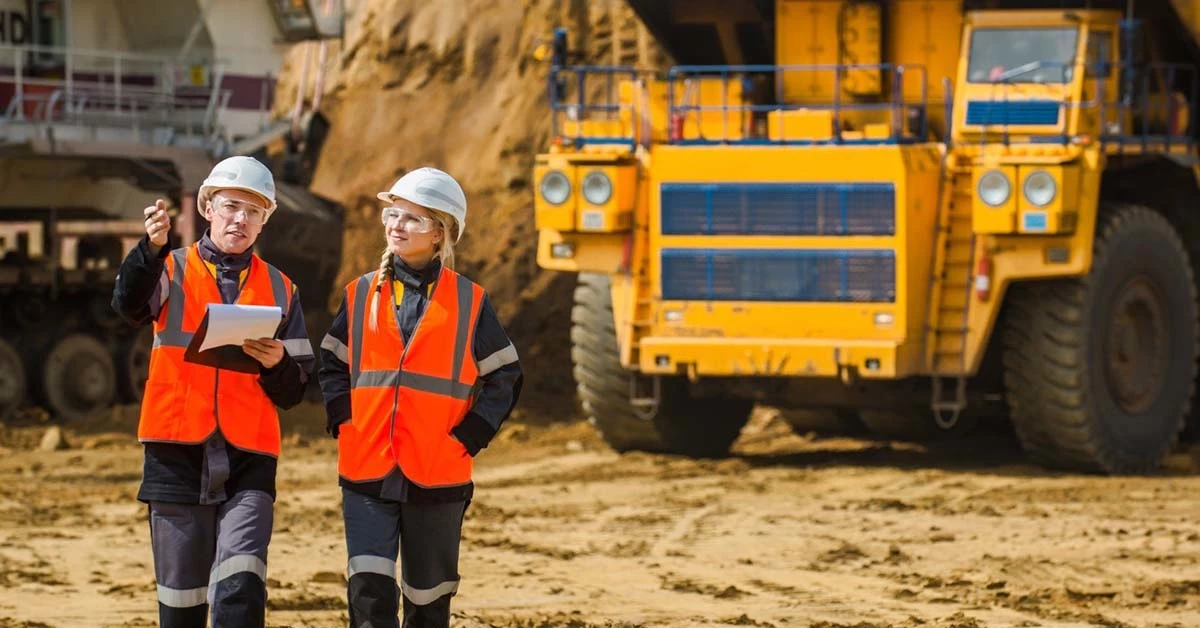How engineering is supporting the SDGs via sustainable mining
2022年2月4日
Gregory Mirabella

Engineering companies are finding ways to support sustainable development while reducing costs
One of the largest engineering and construction companies in the world faced a serious challenge. One of its clients had a metal and mining operation in Africa that needed to comply with a new environmental standard limiting the fumes that can be released into the atmosphere. In the plant, metal is prepared for shipping. As part of the process, the metal is heated to remove moisture and minimize weight. However, the fuel used to provide heat had a high content of sulfur and other impurities that were polluting the environment and contributing to diseases found in the nearby population.
The company needed to find an alternative fuel source — one that would greatly lower emissions to bring the operation into environmental compliance without increasing operating costs.
Similar challenges are faced by a growing number of companies as they strive to comply with regulations that support the United Nation’s Sustainable Development Goals (SDGs) 在新的选项卡/窗口中打开 while containing costs.
The UN set these SDGs in 2015 to achieve a sustainable and fair future for people worldwide by 2030. UN documents outlining what needs to be done to achieve success stress the importance of developing new engineers 在新的选项卡/窗口中打开, applying engineering skills to innovate and solve many of the world’s problems, and researching ways to address basic human needs by alleviating poverty, supplying clean water and energy, responding to natural disasters, constructing resilient infrastructure and bridging the development divide.
SDG 9: Industries, Innovation and Infrastructure 在新的选项卡/窗口中打开, for example, concerns “industries, innovation and infrastructure” with the goal to “build resilient infrastructure, promote sustainable industrialization and foster innovation.” It is central to the achievement of almost all other SDGs. After all, successful economies can’t exist if they lack the engineering skills to design, build and maintain infrastructure. Roads, ports, railways, communications, water supply and energy systems lay the groundwork for an uplifted society. Civil, mechanical, electrical, chemical, and environmental engineers are vitally needed in fields such as mining, petroleum, chemicals, food processing, energy, and manufacturing. Efforts must be redoubled to substantially increase the number of trained engineers across the planet.
Reducing mining emissions in Africa
A metal and mining operation in Africa needed to comply with a new environmental standard limiting the fumes that can be released into the atmosphere. The fuel being used to provide heat at the plant had a high content of sulfur and other impurities that were polluting the environment and contributing to diseases found in the nearby population. To find the optimal solution, the mining company collaborated with an engineering and construction company to embark upon a detailed study of relevant information. They searched through engineering and environmental data sources to find ways to effectively filter noxious fumes. They also examined scientific and engineering papers addressing the combustion qualities of various fuels, and air quality research relating to similar facilities.
As a result, the lead engineer on the mining emissions project found a way to not only reduce emissions but also improve plant operations and efficiency. By switching to cleaner fuel, the company saved more than $10 million in filtration equipment and maintenance. Access to the right information helped minimize plant fumes and boost profitability while bringing the facility into environmental compliance. Favorable financing was also available as banks would not have funded a company that was not considered environmentally friendly.
Road construction cost savings
If long-term sustainability goals are to be achieved, project economics cannot be ignored. In fact, the ideal solution is one that not only lowers environmental impact but reduces costs, too. This was the challenge facing the mining division of an engineering and project management consulting company building a new potash mine. Management identified a 37-mile road within the mine as a major opportunity to achieve cost savings.
Project plans specified gravel type A, a costly and non-structural material. The engineer wanted to confirm her hypothesis that replacing it with type B gravel wouldn’t have any repercussions on road durability or sustainability. This was achieved with a detailed investigation of academic and engineering databases to gain a full understanding of the various properties of gravel, sand and clay. Engineers were then able to calculate with certainty the required thickness of the gravel overlay as a function of the structural capacity required to meet projected future traffic demands. This knowledge enabled the engineer to prove conclusively that changing the type of gravel would only impact the driving comfort with no repercussion on the duration of the road. As for economics, type A gravel was almost 70% more expensive than type B gravel. Thanks to the modification, the company saved $700,000 in construction costs.
Sharing engineering knowledge is key to achieving SDGs
In both the case of the metal mining emissions reduction project and the potash mine road construction project, data gathered from Knovel helped engineers meet their sustainability and cost-efficiency goals. In the gravel challenge, it provided the data on material properties as well as how to calculate the strength and longevity of the roadway using both types of gravel. In the emissions mitigation project, engineers used Knovel to understand fumes filtration and combustion processes, as well as the impact on air quality of various approaches.
These cases highlight the fact that providing engineers with easy access to abundance of knowledge is key to sharing know-how and forwarding the development of technologies and approaches that can transform our society and achieve our SDG objectives.
撰稿人

GM
Gregory Mirabella
Senior Manager for Portfolio Marketing - Engineering portfolio